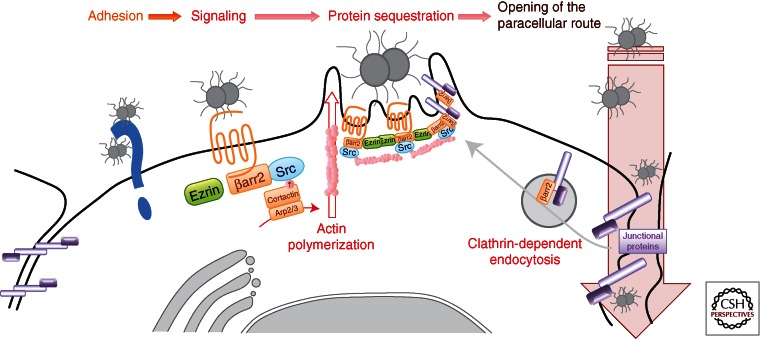Figure 1.
Interaction of Neisseria meningitidis with endothelial cells. N. meningitidis adhere to brain microvascular endothelial cells through an interaction between type IV pili and an unknown adhesion receptor (Nassif et al. 1994). Following initial bacterial adhesion, type IV pili mediate the recruitment and the activation of the β2-adrenoceptor thus leading to the organization of a specific cytoplasmic molecular complex, referred to as cortical plaques. The formation of cortical plaques results (1) from the local accumulation of ezrin and ezrin-binding proteins, and (2) from the accumulation of β-arrestins and β-arrestin-binding molecules such as Src, which induce active actin polymerization, and that of the junctional proteins p120-catenin and VE-cadherin (Hoffmann et al. 2001; Coureuil et al. 2009, 2010). Consequently, this promotes the opening of the cell–cell junctions and allows the transmigration of bacteria through the endothelium.

